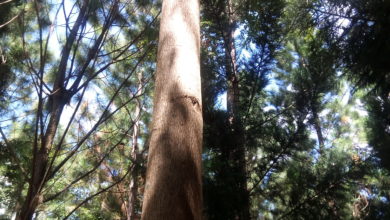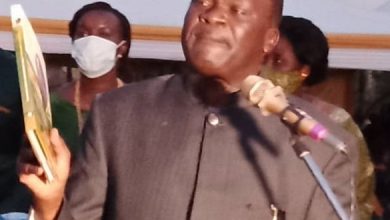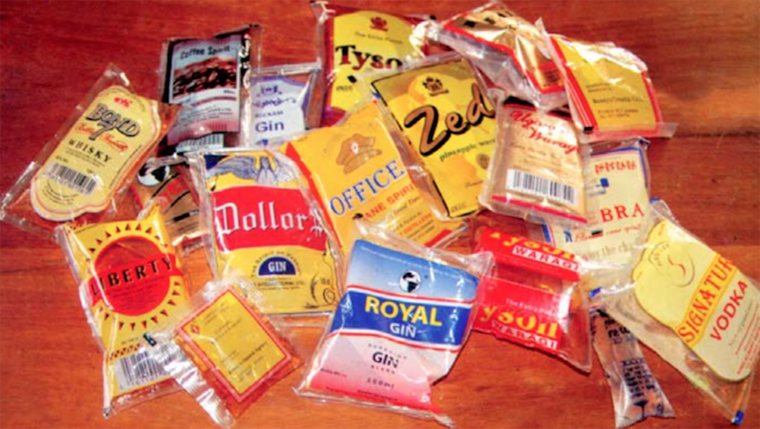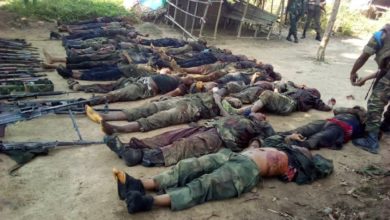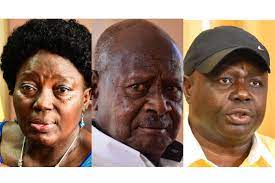
Global Politics
UGANDA:Is President Museveni now last program talk on traibals ni no different agenda on land?
Why, now is he interested on Wankach issues? Ni no
- LUO ROYAL HISTORY
PRESIDENT Yoweri Museveni previously put the royal lineage of traditional leaders in Uganda at the forefront of his submissions to a debate on land in Munyonyo – concluding that Buganda, Bunyoro and Tooro kings are largely of Luo origin.
The President was speaking to some 600 delegates currently attending a conference on Land Conflicts and Mitigation measures in the country.
Mr Museveni talked predominantly about the current debate on land in the country that has sparked tribal emotion. At the conference, Mr Museveni chose to lecture delegates about the history of tribal settlements in East Africa, stating that the ancestry of the kings of Buganda, Bunyoro and Tooro is rooted in the Luo dynasty, before sounding a warning to those he said are inciting tribalism as the debate to amend the 1998 Land Act rages.
Mr Museveni said the Luo, who are largely settled in northern Uganda and western Kenya, governed the three kingdoms, leaving descendants behind, who today, are the current rulers.
“The kings of Bunyoro, Buganda and Tooro are Luos,” said Mr Museveni.
“It’s only in Ankole that we stopped the Luo expansion. How can you have a Bantu name like Oyo, like this young boy (the King of Tooro) and Olimi the king of Bunyoro?”
In further drawing a link between the king of Buganda and the Luos, Mr Museveni cited a Luganda word “Wankaaki”, which means main gate, one he claims originated from the Luo.
“If you ask any Muganda that what is Wankaaki, they will tell you ‘Lubiri lwa kabaka (Kabaka’s palace). But we have to excuse them because they don’t know history. This is a Luo word,” said the President.
Delving into his favourite subject of history, Mr Museveni said the three kingdoms were conquered and ruled by the Luo from 900 to 1500 AD. His historical opinion was corroborated by Makerere University political historian Mr Mwambutsya Ndebesa.
“About 600 years ago, the Jo-bito (Luo) attacked the Chwezi dynasty and formed the Babito dynasty whose descendants are Baganda and Banyoro,” said Mr Ndebesa, adding that the founder of Buganda kingdom, Kato Kimera, was a descendant of King Rukidi Mpuga of Bunyoro. He said Tooro was formed in 1830 out of Bunyoro kingdom. Although history asserts that the Banyankole were part of Great Bunyoro Kitara just like Baganda and Batoro. When the Lwos came to rule over Bunyoro Kitara .They met these group of people who looked tall miserable and under fed. And when they were asked in Luo language “Nye meno wun anga ma ujony ma kum wun cilo kit menoni ?” They replied that “Wan guwa walubu ko le (an ki ko le ) meaning (We are following kole, I belong to kole) that is where Ankole, Banyankole word originated from.
(DAILY MONITOR)
THE BUNYORO, ACHOLI BROTHERHOOD.
“”””””””””””””””””””””””””””””””””””””””””””””‘””‘””‘””””””””””””””””””””””
Although the Banyoro in western Uganda and their Acholi counterparts in the north may appear culturally different, they share a lot historically. The close interaction, which began long ago, with the establishment of the Luo-Babito dynasty, which replaced the Bachwezi dynasty, remains rock solid.
When the Omukama of Bunyoro-Kitara kingdom, Solomon Gafabusa Iguru, travelled to Gulu town to take part in ceremonies marking the coronation of the Acholi paramount chief, David Onen Acana II, on the January 15, 2005, he was no ordinary guest.
At the occasion, which also attracted president Yoweri Museveni, Iguru’s presence was purposefully to fulfill an age-old traditional obligation of installing the paramount chief of Acholi.
For the uninitiated, the rituals for the installation of Acholi paramount chiefs who hail from the dominant Payira clan of Acholi, is performed by the ruling Luo-Babito rulers of Bunyoro-Kitara Kingdom.
Likewise, it is mandatory for the royals from Payira, who have close ancestry with the ruling Babito dynasty of Bunyoro to perform rituals at the latter’s royal functions.
Available historical evidence traces this practice back, over a century ago.
In his book The religion of the central Luo, renown poet, Okot Bitek (RIP), who quoted early missionaries among other sources, wrote that at the installation of the Acholi paramount chief, Rwot Awic, in 1888, the then Bunyoro-Kitara king, Kabalega, delegated one Munyala to represent him at the ceremony. Upon completing the mandatory rituals associated with Awica’s installation, Munyala returned with royal regalia including a whole meal spear, a drum and a wooden bowl called wer, which the Acholi use when performing rituals in ancestral shrines.
The ancestral shrines, which the Acholi call abila, are incidentally called ekibila by the Banyoro. The sacred Acholi shrub bito, which stands in their ancestral shrines, is historically believed to be the origin of Bunyoro’s Babito clan name, because the shrub stood near the hut of the first Luo-Babiti queen mother Nyatworo.
At Awicâs installation, the Bunyoro-Kitara kingdom representative is said to have given him the Bunyoro praise name aboki to signify friendship and brotherly love.
When Rwot Awic died after ruling for 58 years in 1946, Sir Tito Winyi, the then Omukama of Bunyoro-Kitara kingdom, was represented at the funeral by the then head of the Karuzika palace, George Kabalega and the Omukama’s priest Dwarire.
In his book, Okot further noted that the early Luo-Babito kings of Bunyoro were buried in Masindi northern county of Kibanda and the practice only ended as the kingdom expanded southwards.
It is also interesting to note that while the Bunyoro pet names are called empako the Acholi word for praise (pako).
A keen listener to Luo languages generally and the Acholi dialect in particular would know that words used as empako by the Banyoro are also used by the Luo-speaking tribes.
In the Acholi language, Aboki means “I have narrated to you” while Amoti means “I have greeted you or I salute you”. On the other hand, Abwoli means “I have lied to you”, Adyeri in Bunyoro means “loved ones” while it means “I am your friend or I have surrendered it to you” in Acholi. In Acholi, Atenyi means “I have left you”.
It is also important to note that at the ceremony to give empako in Bunyoro, millet, which is believed to have been introduced to the region by early Luo settlers, is served as a ritual meal.
To this day, anyone who knows Runyoro/Rutoro and Acholi cannot help wondering if the several shared word meanings similarly in pronunciation could be coincidental. An example is kiniga means anger in both Runyoro and Acholi, while kisiika, which means wall in Runyoro and Acholi, is spelt as kicika because Acholis’s 90-letter alphabet excludes letter “s”. Obukonyezi, which means “assistance” in Runyoro. is the equivalent of konya, which is the Acholi word for asking for help and the equivalent of Runyoro’s “Nkonyera”. Papyrus reeds, which the Acholi call “togo”, are referred to as ebitogo by the Banyoro. Strikes, which the Acholi call jemo, is referred to as okujema in Bunyoro. The Acholi word ogom, which means bent, is the equivalent of Runyoro’s egomere.
I was recently amazed to learn that when an Acholi is asking someone to tie something into a knot, one would say, âtud atuda�, a munyoro would say, âtuda butudaâ�.
Although a granary which the Acholi call dero is known as enguli in Runyoro, a giant granary is called ebidero, while message, which the Acholi call kwena, blends well with its Lunyoro equivalent obukwenda.
Elders in Masindi’s Mutunda sub-county contend that there is a spot along river Nile called Adeg Lango, where any one with Luo blood in his veins can cross Africa’s longest river without trouble, during certain periods of the year.
Of the 70 Acholi clans, Okot noted that 35 were considered noble enough to give a woman for a wife to the Luo-Babito kings of Bunyoro-Kitara kingdom and for this reason, many queen mothers of these rulers came from Acholi.
So with such history, it is not surprising that LORD’S RESISTANCE ARMY leader JOSEPH KONY, who hails from northern Uganda, invited Bunyoro-Kitara kingdom to the peace talks at his Garamba base which by then the prime minister ALIBA represented the kingdom.
Tracing the history of the friendship between Banyoro and the Acholi, According to reliable sources from Bunyoro kitara Kingdom,its said that chief Laboni of Lango had his daughter Nyatworo married to prince Omucwezi Kyomya, brother to Omukama Omucwezi Ndahura. Nyatworo bore prince Kyomya four sons; Isingoma Mpuuga Rukidi (Lakidi) the first Omubiito Omukama of Bunyoro-Kitara and Kato Kimera (first Mubiito kabaka of Buganda) who were twins; Kiiza (first Omubiito cultural ruler of Busoga) and Nyarwa, who later established the Babiito dynasty of Ankole.
When Abacwezi kings disappeared mysteriously without living a prince behind to inherit the throne, the wise men, elders and diviners of Bunyoro-Kitara travelled to West Nile where they had been informed that prince Kyomya had married chief Laboni’s daughter with whom he had four children she was living with in a hut under a tree called bito in Luo.
The princes agreed to come to Bunyoro – Kitara on condition that they would be allowed to use their Luo language until they learnt Runyoro. Their departure attracted widespread interest among young Luos who also decided to go to Bunyoro-Kitara with their families to accompany the four princes. But on the way to the coronation ground at Mubende Hill, many of them got tired of walking the long distance. They laid anchor at Cope (Luo) in today’s northern Masindi to found present day Kibanda county of Masindi District, which is inhabited by Luos and represented in Parliament by MP Otada. They are Banyoro of Luo descent.
On reaching the coronation ground at Mubende, Isingoma Mpuuga Lakidi (Rukidi), their elder brother, was selected by the wise men and diviners to become the Omukama. Hence, a young boy born out of the marriage between a Mucwezi and Luo girl established the Ababiito dynasty in Bunyoro-Kitara.
The inter-marriage between the early Luo settlers and the women they found left behind by the Bachwezi, resulted into the birth of the Chope tribe in Kibanda county, who prefer to call themselves “Paluo”, meaning The Luo.
The Paluo detest the name chope, because according to historical accounts, the Luo-Babiito settlers who took charge after the Bachezi were amazed to find mostly women left behind and they would say to themselves “coope kany” meaning “There are no men here” which resulted in the “chope” name.
Nyagiro, the mother of Olimi, the fifth Bunyoro – Kitara Omukama also belonged to the Luo Nywagi clan, while the mother of his successor Nyabongo II belonged to the Cua clan just like Nyamutahigwa, the mother of the greatest of Luo-Babito kings, Kabalega.
In Luo, “Nya” by which the names of these queen mothers begin, means “The daughter of”
Among Ugandan ethnic communities, although only the Banyoro, Batoro and Basoga readily accept that their kings have common ancestry, the historical account, which should be a huge unifying factor to all Ugandan tribes, suggests that all the kingdoms were created by people of the same ancestry.
Although some people will find this disturbing, if encyclopedias are to be believed, then in the 15th century, a Luo-speaking tribe established the kingdoms in Uganda, including Buganda Kingdom.
“INFORMATION IS POWER “

